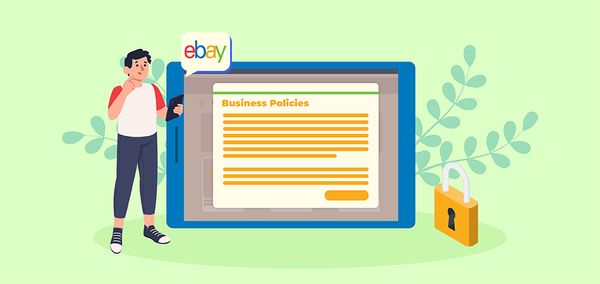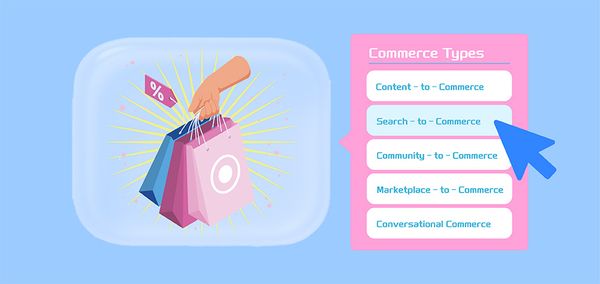Ultimate Guide of B2B Pricing - Everything You Need

Selling to other companies is a different game than selling to consumers and calls for distinct approaches to every choice you'll make.
One of those variations is in the price techniques you use. This article will help you understand how to price your B2B items or services if you need help deciding how to do so.
We'll discuss the distinctions between B2B and B2C pricing, some typical B2B pricing techniques, and provide advice on negotiating the best price for the products and services you provide.
What Is B2B Pricing
B2B pricing refers to a company's approach to determining prices for the products and services it intends to offer to other companies.
This is different from B2C pricing, which has a client base of individuals rather than other companies. Let's go further into the topic to grasp better the distinctions between the two and how to choose B2B pricing strategies for better price success.
Differences Between B2B and B2C Pricing
The pricing techniques used for each must adjust to the diverse ways businesses and customers operate in the marketplace. If B2B pricing strategies are to be as successful as possible, they must be distinguished from B2C pricing strategies in two key ways:
B2B Pricing often Varies Per Client
Pricing for consumer sales is often consistent. A few things are exceptions. For instance, buyers often haggle over the cost of pricey stuff like cars. Prices are negotiated far more often in the corporate sphere than in the consumer one. Businesses probably deal with expensive bills regularly.
| Get Started Now to Grow Your Online Business with the Best AliExpress Dropshipping Tool - DSers! |
The propensity to bargain down is constant in the B2B sector, regardless of whether these higher costs result from mass purchases of inexpensive items or a limited number of pricey ones.
Pricing in B2B Is More Complex than in B2C
Prices for consumers are pretty simple. The price given for a product, virtually always publicly disclosed throughout the process, is what the customer uses to choose whether they want to buy it.
Pricing for businesses is trickier. Several parties are often involved when making a transaction, and a line of command must be followed. The fact that price is usually less upfront and obvious than B2C pricing further complicates this for a reason described above.
Four B2B Pricing Techniques
Now that we've covered how B2B pricing strategies vary from B2C ones let's talk about the pricing strategies themselves. When selling to other companies, firms may use a variety of pricing tactics, but the four options below are the most popular ones. Let's go through each of them and talk about the reasons a company would choose for, or decide against, a specific pricing approach.
1. Cost-Plus Pricing
Cost-plus pricing, sometimes referred to as markup pricing, is one of the most straightforward pricing methods available. This tactic involves calculating the cost of producing a commodity or service. To do this, sum up the costs of the raw materials, labor, and overhead needed to make one product unit.
A set markup percentage is then placed on top of it. For example, a product that cost $10 to produce but had a 50% markup would sell for $15. Since this price model is so straightforward, variables like competition pricing are not considered when calculating it.
- With cost-plus pricing, you can easily explain to your consumers why a product costs what it does understandably.
- You may anticipate a regular rate of return from sales of the item since the markup is constant.
- It is simple to give reduced markup to companies that want to negotiate better rates in the B2B sector, where talks are frequent.
- Cost-plus pricing is much less appealing for industries like SaaS, where the cost of producing a product could not be exceptionally high.
- Given that any price rise and associated expenses are covered by an increase in markup, automatically increasing prices by a specific amount might also lessen the need to decrease production costs.
- With this pricing strategy, it is simple to overprice your products and services since competition is not considered.
2. Pricing Based on the Value
Cost-plus pricing makes it simple to overcharge for your goods while simultaneously making it simple to lose money. By establishing the price on the matter to the client, value-based pricing aims to eliminate such issues.

Value-based pricing, put more simply, sets prices based on what a company believes its consumers would be prepared to pay for a given product. If the computation is accurate, this pricing method is quite effective.
- Choosing value-based pricing versus cost-plus pricing might make it simpler to break into new markets and compete with other companies. You avoid turning away prospective clients and undervalue yourself by just charging what consumers are ready to pay.
- By making efforts to enhance the impression of your brand, you might boost the amount of profit you'll be able to generate from each item since it is feasible to raise the perceived worth of a product.
- It may be challenging and time-consuming to acquire client intelligence before determining the ideal pricing for a value-based approach. No secret button will instantly reveal the average price your clients are willing to spend. This is particularly true if you're starting and lack the advantage of historical B2B or B2C sales data.
- Although you do have some influence over how others perceive value, the market may also be quite unpredictable. Given the ongoing need to adapt to shifting market pressures, you can discover that your pricing isn't exceptionally stable in specific industries.
3. Pricing Dependent on Rivals
In certain circumstances, you may delegate the difficult task of determining the optimal value-based pricing to your competitors. When using competitor-based pricing, you collect all of your rivals' prices, average them, and then choose to set your price slightly higher or lower.
You'll always be within striking distance of your successful competition, as long as most of them have decided an appropriate price approach.
- Competitor-based pricing is the approach that is the simplest to comprehend, second only to cost-plus pricing. Mathematics isn't any more difficult than what we all studied in primary school, so it doesn't involve any guessing.
- By setting prices comparable to those currently in use, you limit your possibilities of frightening away clients with an excessively high price and undervaluing yourself with a low price.
- Value-based and competitor-based pricing changes prices for the market, while competitor-based pricing does it more simply.
- You lessen the likelihood of selling yourself short, but you don't completely prevent it. If your items become wildly successful, competitor-based pricing won't change to reflect that, and you'll be losing out on money.
- Your value offer must be almost similar to your rivals' for competitor-based pricing to be effective. This model will overlook any unique characteristics of your product or lack thereof, which may lead to incorrect pricing.
4. Adaptive Pricing
Dynamic pricing aims to consider all the variables influencing customers' payments at any given moment. This covers supply and demand, prices from rival businesses, and whatever other information you can gather to feed the algorithms. The accuracy of estimating the best cost at any given moment has dramatically improved with contemporary machine learning.
- The pinnacle of responsive pricing is dynamic pricing. This strategy ensures that your pricing constantly reflects the state of the market.
- Dynamic pricing is often determined using algorithms, saving time when manually calculating your price points and fully enabling your company to benefit from automated pricing.
- Machine learning-based dynamic pricing is very effective because big data has made it feasible to analyze a much finer granularity level than was previously possible. Profits are increased above conventional procedures as a consequence.
- With dynamic pricing, you must be ready to make frequent price adjustments. For clients who anticipate more consistent prices, this may be off-putting. Additionally, it renders the tactic useless for subscription-based businesses.
- The least transparent of all the alternatives is dynamic pricing. Even you won't be able to determine why your items are priced as they are given the complexity of pricing and the opaque nature of the algorithms used.
Tips for Mastering Your B2B Pricing
How do you decide which option is ideal for your B2B firm when so many options are available? It takes expertise and effort to find the perfect pricing model and refine it to an excellent price point. Nevertheless, there are several strategies you may use to eliminate uncertainty and arrive at the ideal price more rapidly.
Examine various pricing models
It's not a given that the first pricing plan you choose will be successful. Try out several rates and pricing schemes until you discover the best one.
Plan your price according to your personality
Your marketing department has probably already developed a collection of buyer personas. You can also use these buyer profiles to establish the price range for a particular consumer.
Consult your sales staff about ideas
Beyond the fake characters, your sales team interacts with clients directly. They are intimately familiar with them and can provide you with information on the price range.
Pricing should be based on reliable facts and analytics, not speculation
You can use the same data and algorithms to assist you in selecting your initial rates even if you don't employ dynamic pricing. Big data is a valuable resource. Use it.
Explain the leak
The price that does not earn you as much money as it could or even pricing that loses you money might come from failing to consider frequent sources of leakage.
Conclusion
Pricing may be the most crucial element in determining whether your firm succeeds or fails, yet it is only an afterthought for many companies. You'll already be ahead of the competition if you try to understand better your clients, your market, and your pricing strategy.













 Company
Company
 Why Choose DSers
Why Choose DSers
 Blog
Blog
 Help Center
Help Center




 Live Chat
Live Chat